How to Revive Wilted Salad Greens and Herbs
When you buy fresh salad greens or fresh herbs they are not always as fresh as you might think. Once they’ve been picked and packed they’ve already started to age and wilt as they make their way to the grocery store or farmer’s market. There is just no way around this. But, I do have a solution to help prolong their shelf life. To follow is my comprehensive guide on how to Revive Wilted Salad Greens and Herbs and bring them back to life!
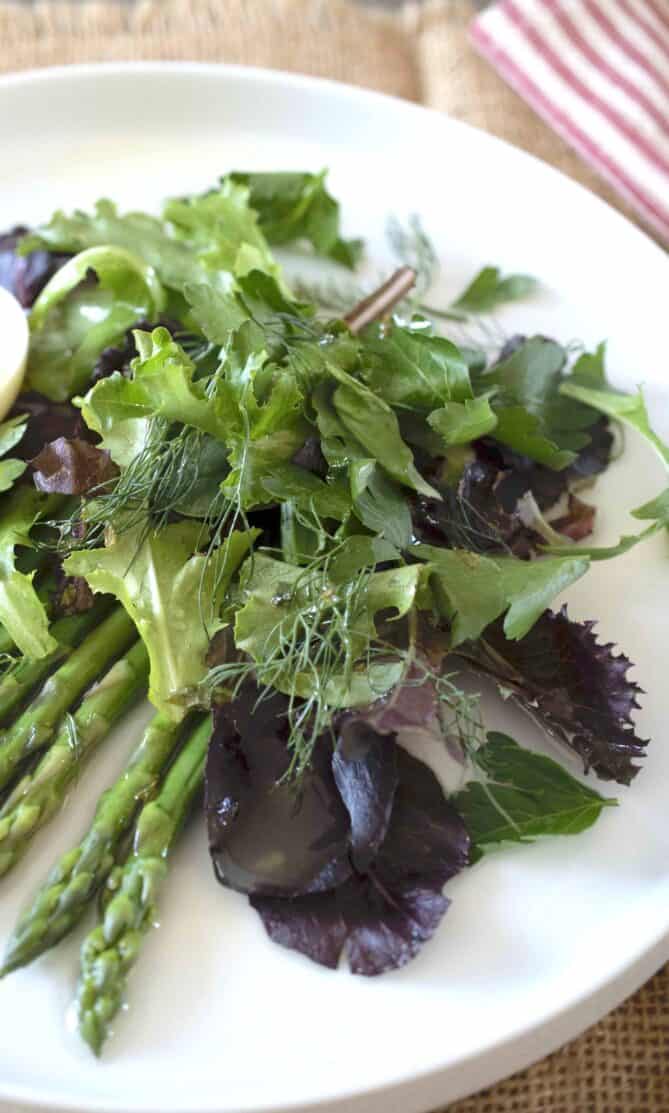
With rising food costs, none of us can afford any food waste, and you don’t have to! We’ve all looked in the fridge and thought “well, there’s more unused salad greens I now have to throw out”. Unless they are slimy, you CAN help bring them back to life.
There are many salad greens you can buy, from peppery arugula (rocket) to romaine lettuce, butter lettuce, kale, spinach, frisee; the list goes on!
Yes. While they may not be as visually appetizing as when their once bright green color, they are still edible. Just make sure there are no brown spots. You can use the cold water soaking method, mentioned below, for 30 minutes to revive them.
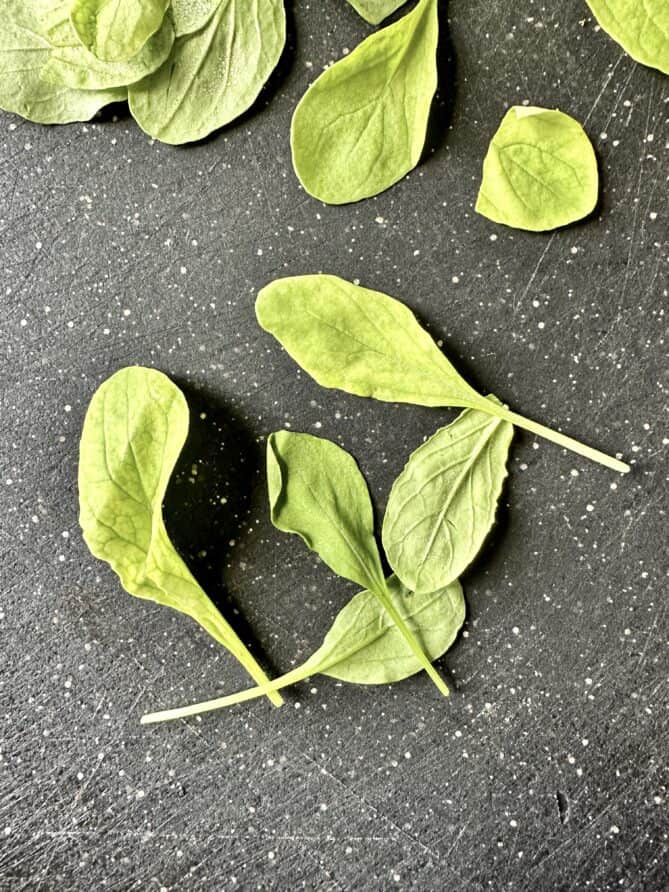
Reviving Wilted Greens – Before and After
You can see in the picture above, baby arugula that has been sitting in my fridge for a few days. They have softened and are starting to turn yellow. Yellow is not a bad thing, they’re still edible. There’s not much you can do about the color, but you can firm up and hydrate the leaves.

There are 3 stages of decomposing leafy greens. The first stage is they loose their crispness, dehydrate, look limp and wilted. The second stage is they start to lose their green pigment (chlorophyll) and the third stage is they become slimy. The good news is, I’m going to show you how to prevent them getting to the yellow and slimy stage AND help prolong their life.
What to look for when buying Lettuce and Salad Greens
The first step to observe is buying the freshest possible and know what to look for. For heads of lettuce you want them to be heavy, which indicates freshness and means they have a good amount of water content.
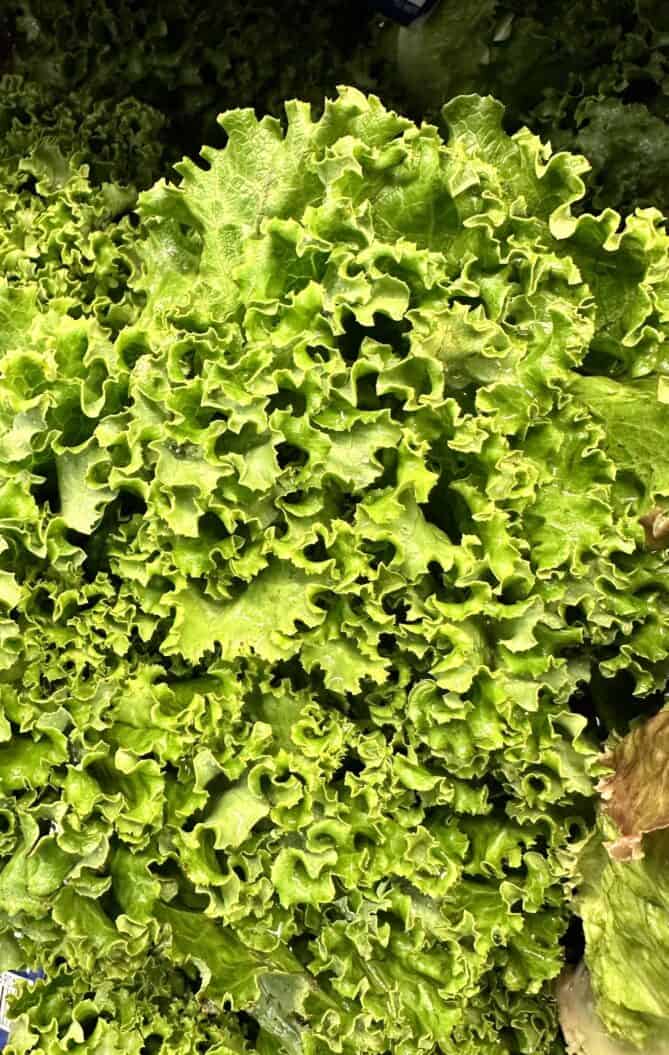
The outside leaves should be crisp with no signs of browning. Bruised and wilting leaves are a definite sign of aging. The root end should not be overly brown as this indicates that it was picked some time ago and not as fresh as you want it to be.
Preparing and storing Salad Greens and Lettuce
Treating salad greens and lettuce as soon as you get them home is the best way to preserve them. You should always clean and refresh them before storing them as they will continue to wilt and dehydrate if you skip this step. Remember to discard any leaves that are damaged, then separate the head into whole leaves by cutting off the root end. Doing this will ensure the leaves come apart more easily.

Prepackaged Salad Greens
Prepackaged and washed greens also benefit from soaking in cold water just before use because they’ve been sitting in a sealed container and they’re losing their moisture.
Drying and storing Lettuce and Salad Greens
If using immediately, break large leaves into pieces and place in a salad spinner. Tearing into bite or fork size pieces prevents browning and gives salad natural shape. Discard the tough ends. Don’t overfill your spinner as this will prevent them from getting squashed and damaged.

Drying Lettuce and Salad Greens without a spinner
If you don’t have a salad spinner, place the leaves flat on a clean, dry towel. Hold the opposite corners in 1 hand and swing. All water must be removed as any excess water will end up in your vinaigrette and affect the flavor and water down the consistency. If this occurs, the dressing won’t stick to the leaves.

Storing whole lettuce
A whole head of lettuce stores better when their leaves are whole and the stem is left on. I always wrap a wet paper towel around the stem and refrigerate as soon as I get it home.
Reviving wilted Lettuce and Salad Greens
If the lettuce or greens are wilted, soak in cold water with ice for up to 30 minutes. This action both crisps up and hydrates. You will be able to feel just how much crisper they are as they’ll feel and look firmer.

Lettuce and Salad Greens past their prime
If the leaves are brown, spotted, slimy or smell bad, it’s time to discard.
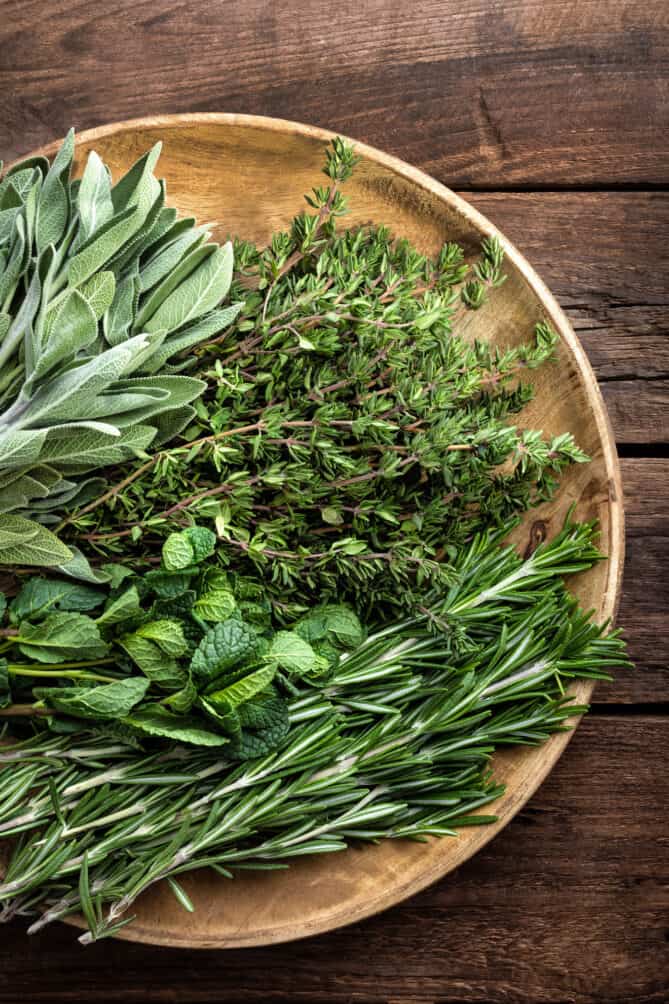
This article is How to Revive Wilted Salad Greens and Herbs and now we move on to herbs.
Buying Fresh Herbs
Herbs that still have the root attached will last longer. Look for vibrant, bright green leaves without any black or browning and are not slimy, turning yellow or starting to dry out.
If they have any flower buds (e.g. basil like the picture below), they must be removed immediately and usually means the herb taste has diminished. You must remove the buds and if the leaves look nice and green. The flowers are also edible.
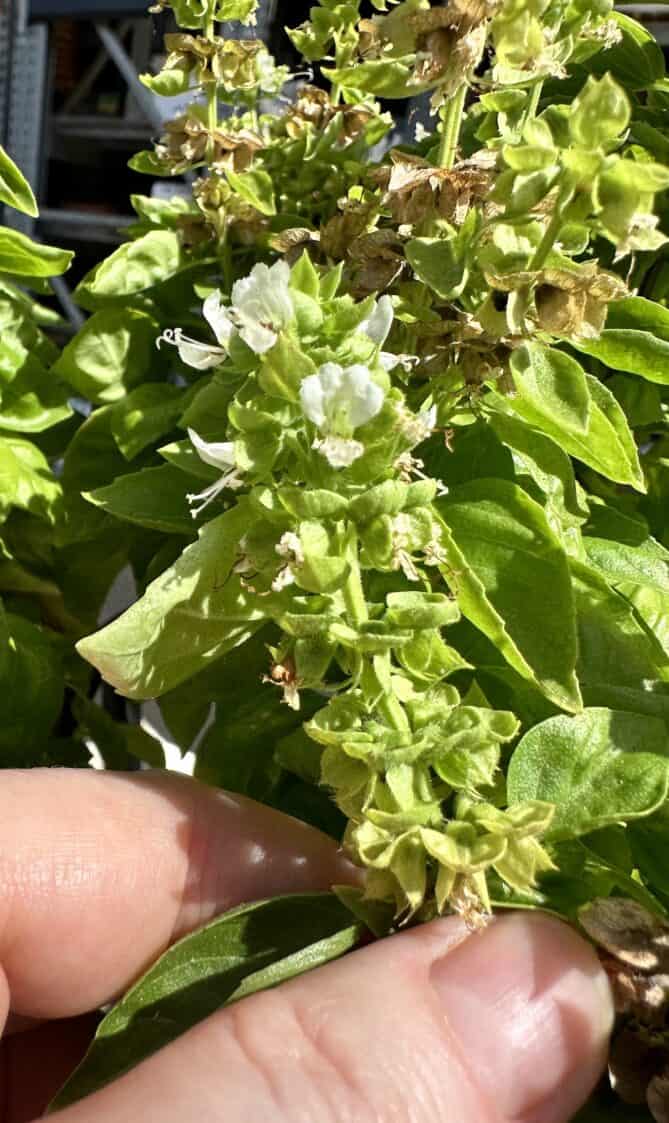
Washing Fresh Herbs
Only wash fresh herbs prior to using (unless very dirty). Rinse in cool water then wrap in a dry paper towel.
Storing Fresh Herbs
Fresh herbs need to be stored properly because, once cut, they begin to die and their essential oils fade. To store herbs in a refrigerator, remove any stray leaves from the bottom of the stems, then place in a container or jug standing up. Fill with 1 or 2 inches of cold water; this way they will feed like cut flowers.
If the water touches the leaves, they will rot so keep this in mind. Place a plastic bag loosely over the top to protect them from the cold air. Remember to change the water every few days or when the water starts to discolor.

I find that Basil is the most finicky herb to store, especially when cut. This is why I buy potted basil. Sometimes storing basil in water doesn’t work, sometimes at room temperature doesn’t work. I’ve even had it last longer refrigerated, which you’re not supposed to do. So, this is a tricky one. As soon as brown spots are on basil leaves, they are already not useable.
Herbs can be also stored in the package they came in, but condensation can form in the package during refrigeration so just add a paper towel to soak up any excess moisture.
Reviving Fresh Herbs
Fresh herbs fall into 2 categories: delicate and hearty. Some examples of flat and curly delicate herbs are parsley, dill, tarragon, chives, mint, cilantro and basil. This type of herb can have a very short shelf live, especially basil.
Hearty herbs such as rosemary, thyme, sage, oregano and bay leaves will have a longer shelf life.
As an example, just take a look at these before and after photos of wilted and revived dill. The refreshed dill at the top is greener and you can see opened up and looks firmer.
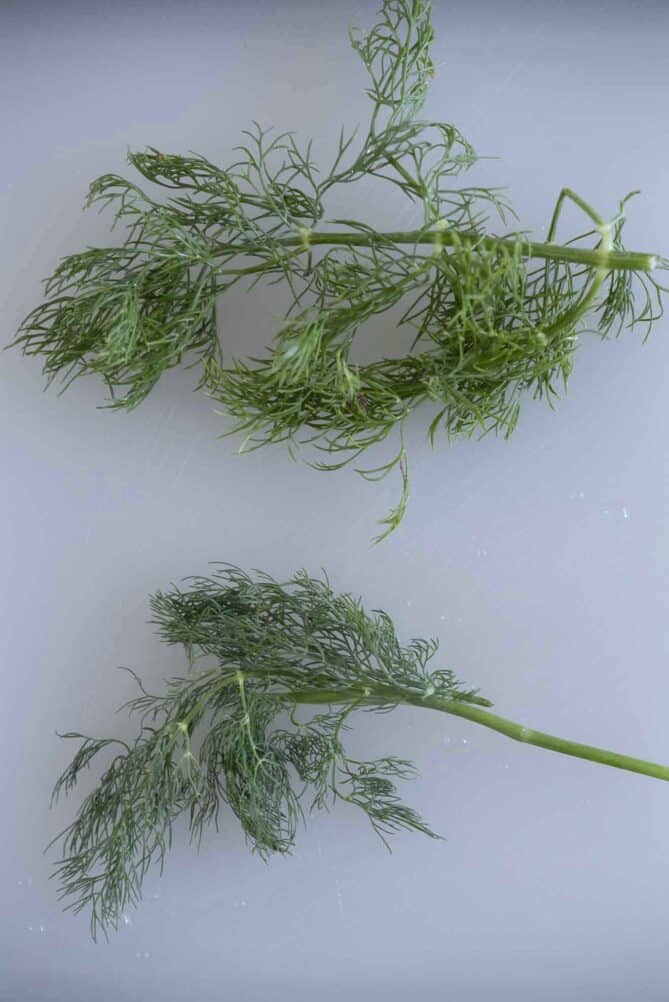
Phew! I know that’s a lot of information to absorb but now you know how to preserve your greens and herbs. So with all this information now in hand, how about a few recipes to use them in? Here you go:
Fresh Salad Greens and Herb Recipes
- Asparagus Herb Salad with Soft Boiled Egg
- Grilled Pineapple Coconut Kale Salad
- Herb and Garlic Marinated Mushrooms
- Roasted Potato and Herb Salad
- Grilled Herb and Lime Chicken
If you have any questions or comments regarding How to Revive Wilted Salad Greens and Herbs, ask or comment below.


2 Comments on “How to Revive Wilted Salad Greens and Herbs ”
This is so informative useful. So much great info thanks
Thank you so much Sandi.